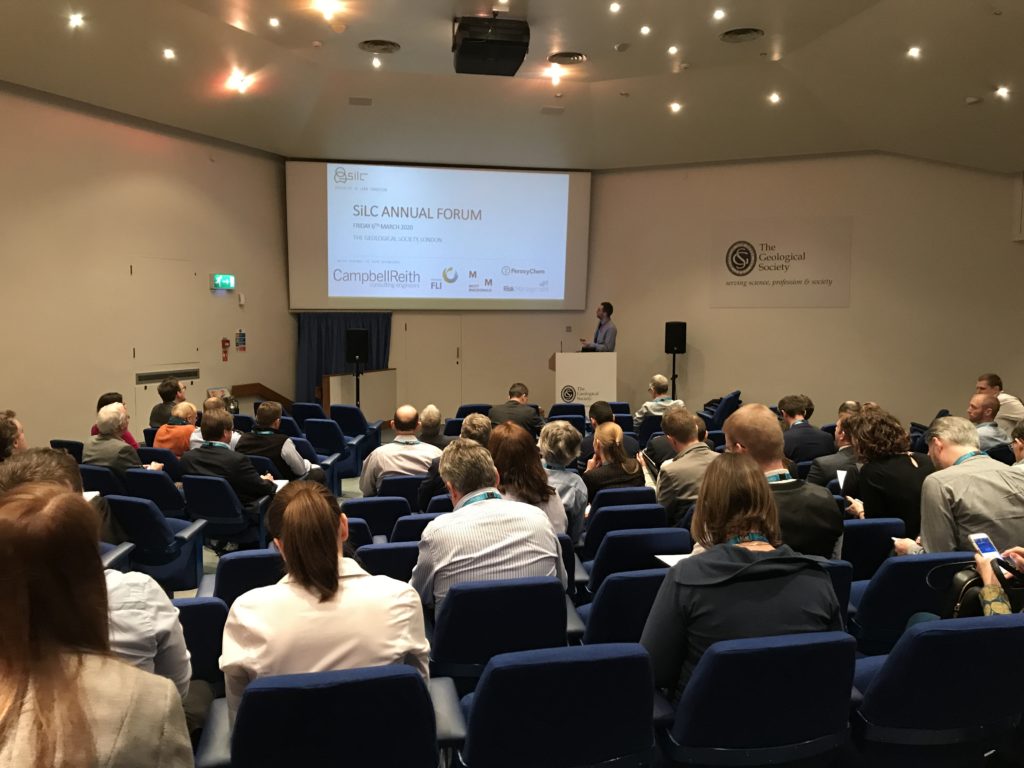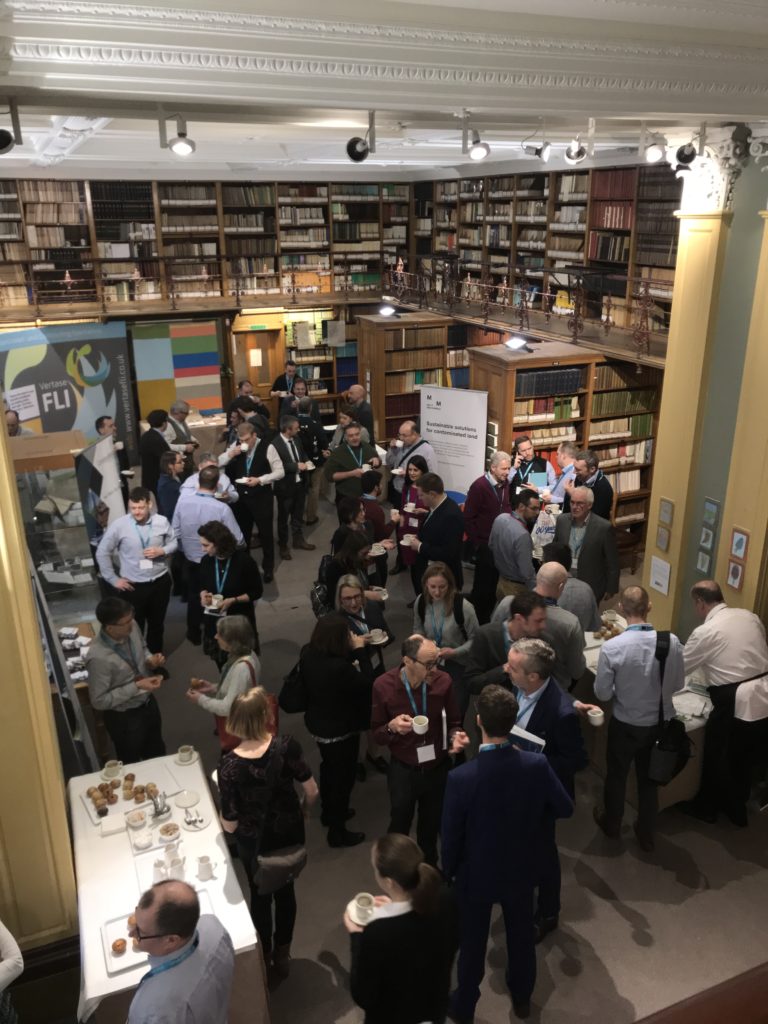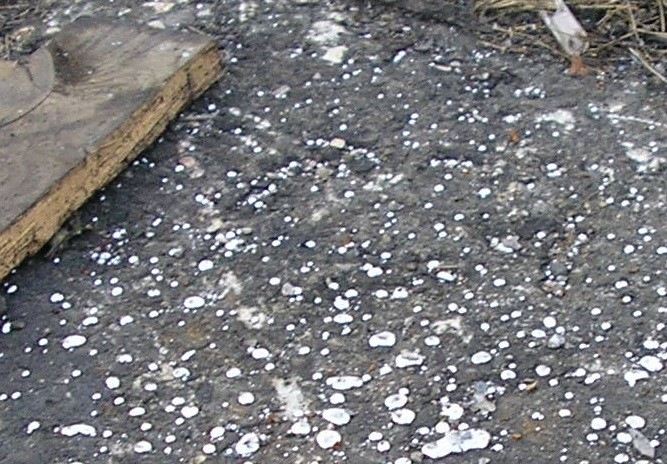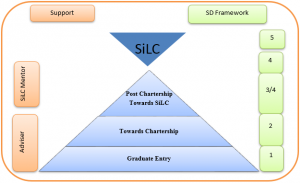Article contributed by Peter Witherington, Professional and Technical Panel Member of SiLC
I hesitate to suggest it is ever possible to become excited about waste. However, since that memorable day in 1994 when friendly Auntie CoPA left us, my children have called me a ‘sad dad’. This is probably because I loved telling them the fairy tale about how, because of an evil spell from a wicked witch who lived in lands across the sea, the sand from their sandpit underwent a magical transformation into that dreaded Monster Waste when they dropped it on my lawn.
The twists and turns in this tale over the last 16 years have left us breathless with the grandest lawyers in the land knitting together a web of intrigue to the design of the wicked witch. But fear not, in the nick of time, fairy godmother CL:AIRE brought us Princess DoWCop who, wielding her magic wand, gave the cleverest servants superpowers to fight that dreaded Monster returning him back to sand. And they all lived happily ever after . . .
Well, unfortunately, Prince DoWCoP’s powers were limited and unable to give superpowers to turn the Waste Monsters carelessly spilled onto the beach the beach, back to sand.
I am sorry but that is exciting as I can make the story but maybe someone else could pick it up and make it into a children’s best seller.
So, what is the reality? Article 2.4 of the Mining Waste Directive (MWD) is quite specific in stating that waste falling within its scope (extractive waste) is not subject to the Landfill Directive. As DoWCoP only deals with waste covered by the Landfill Directive, paragraph 11.1 was introduced, which expressly excludes its application to wastes that fall under the scope of the MWD. The directive defines extractive waste as: “waste resulting from the prospecting, extraction, treatment and storage of mineral resources and the working of quarries”. Even though the material may have been deposited decades ago, it would still qualify as waste unless the ‘end of waste’ test has been satisfied (and I think we can assume that if the material has just been left in situ and not recovered in any way, it will still be waste). It would therefore appear that in redeveloping former extractive sites, the construction industry could be dealing with wastes that are not covered by the Landfill Directive and the process of applying DoWCoP to define materials as ‘non waste’ would not be appropriate.
Under the MWD a “Waste facility” is defined as any area designated for the accumulation or deposit of extractive waste for given periods of time. Where the waste has been designated as such for 3 years, or more, the area will qualify as a “waste facility” regardless of the type of waste. Colliery spoil on most sites will have been in place for more than 3 years and hence it seems likely that the site becomes a waste facility regulated under the MWD.
However, as with all things to do with waste, nothing is simple and the MWD provides a couple of exclusions that could potentially apply:
Firstly, when wastes derived by the extractive industries is transported away from the mining waste facility it ceases to fall within its scope and as such falls under the regulation of the landfill directive. The location of the mining waste facility involving operations that took place before the mining waste directive was introduced might be difficult to define.
Secondly, the directive excludes areas that have been used for deposition of both mining waste and other wastes; in these circumstances both the mining waste and the other waste would be regulated by the Landfill Directive.
So, when dealing with a site such as a former colliery where wastes from the mining operations have been deposited, the poor qualified person is left with the dilemma of deciding whether she is dealing with a Mining Waste Facility or not. If the former, she cannot use the provisions of DoWCoP to re-use the site arisings if they comprise mining waste. So, what would the MWD require?
There are thirteen articles within the MWD defining the regulatory requirements, one of which is an Environmental Permit. However, an Environmental Permit is not required for those facilities that have been closed by 1 May 2008, those that stopped accepting wastes and those that will be completed by 21 December 2010. Many former extractive sites will have ceased operations before the stipulated dates but what are the implications when the materials are moved around as part of the construction project? The wastes remain extractive wastes and presumably still fall within the scope of the MWD. Should this be the case the beleaguered qualified person can look to the directive once more and see an important exception to the requirement of an Environmental Permit:
Inert Waste and Unpolluted Soil. Article 7 of the MWD (i.e. the obligation to hold a permit for a waste facility) do not apply to inert waste and unpolluted soil resulting from the prospecting, extraction, treatment and storage of mineral resources and the working of quarries, and waste resulting from the extraction, treatment and storage of peat.
• “Inert waste” is defined as “waste that does not undergo any significant physical, chemical or biological transformations. Inert waste will not dissolve, burn or otherwise physically or chemically react, biodegrade or adversely affect other matter with which it comes into contact in a way likely to give rise to environmental pollution or harm human health. The total leachability and pollutant content of the waste and the ecotoxicity of the leachate must be insignificant, and in particular not endanger the quality of surface water and/or groundwater.”
• “Unpolluted soil” is defined as “soil that is removed from the upper layer of the ground during extractive activities and that is not deemed to be polluted under the national law of the Member State where the site is located or under [EU] law”.
I think it can be argued that colliery spoil that is re-used during development comes under this definition of inert waste as it must have demonstrated that the material is suitable for use and checked whether it could burn, biodegrade or adversely affect matter it comes into contact with. It will also have been necessary to check leachability and undertaken a groundwater/surface water risk assessment.
Inert waste still comes under certain requirements of the MWD as shown in Table 1 below that I have extracted from the EA Guidance on the WMD.
Table 1
MWD Directive Requirements for Inert Wastes and Unpolluted Soil*
Environmental Permitting Guidance. The Mining Waste Directive For the Environmental Permitting (England and Wales) Regulations 2010 Updated May 2010 Version 1.1. Paragraph 2.24
| Article |
Description |
Requirement for inert Waste Y/N |
| 4 |
General Requirements |
Y |
| 5 |
Waste Management Plan |
Y |
| 6 |
Major accident prevention and information |
N |
| 7 |
Directive requirement for a permit |
N |
| 8 |
Public participation |
N |
| 9 |
Deposit in excavation voids |
Y |
| 11(1) |
Management, technical development and training |
N |
| 11(2) |
Requirements on location, construction, management, maintenance, monitoring, inspection, restoration, aftercare and record keeping |
For waste facilities only |
| 11(3) |
Notification of events and environmental effects, implementation of emergency plans and reporting of monitoring results |
N |
| 12(1-4) |
Closure and aftercare procedures |
Not required |
| 12(5-6) |
Following closure, measures to control stability and minimise negative effects. Notification of events and effects, implementation of emergency plans and reporting monitoring results |
N |
| 13(1-5) |
Requirements to prevent the deterioration of water status, soil pollution, prevent or reduce dust and gas emissions |
Y |
| 13(6) |
Reduction of cyanide in ponds |
N |
| 14 |
Financial Guarantees |
N |
| 16 |
Informing other Member States |
N |
| 17 |
Inspection prior to waste deposit |
N |
The important conclusion from the EA Guidance is that Article 7 (The requirement for an Environmental Permit) does not apply to inert wastes and hence should the qualified person conclude that the materials fall within the scope of the MWD, they can breathe again as an Environmental Permit is not required to regulate the work.
The Articles which, nevertheless, must be complied with are:
- Article 4: This simply states the general requirements of the directive in terms of preventing harm to human health and the Environment and the planning conditions and WMP will ensure this is complied with.
- Article 9: This deals with the infilling of mine (surface or underground) voids. In any event the requirements are all around ensuring stability and hence if ever voids have been infilled voids this requirement should have been complied with.
- Article 11(2): These paragraphs deal with location, construction, management, maintenance, monitoring, inspection, restoration, aftercare and record keeping even when dealing with inert waste if it is in a waste facility. According to the directive if waste has been stored for more than 3 years, it automatically becomes a waste facility. That said the location, construction and management have already been dealt with. Monitoring and inspection if required would be part of the planning permission for the new development and I presume that restoration and aftercare are all part of the development. Record keeping could become an issue but see comments on Article 5 below.
- Article 5: This article is the most significant for redevelopment work in that it requires preparation of a Waste Management Plan. However, looking through the requirements of the Article, all the items required in a WMP are provided in an MMP (apart of course from the name). The added advantage of the MMP is the requirement to maintain records that would fulfil the obligations under Article 11(2).
Conclusion
I suspect that many construction projects on former colliery sites may have inadvertently applied DoWCoP to materials that are excluded through paragraph 11.1. However, I do not see that these operations have been flouting the law since it is likely they have been dealing with inert waste that does not require implementation of an Environmental Permit. Following the requirements of DoWCoP and with the onus under planning to protect Health and Safety and the Environment operations are fulfilling the obligations of the MWD albeit not directly in line with its provisions. By following DoWCoP, practitioners are providing regulators with all the information and more that could be required under the MWD.
I am sorry for not providing the excitement that my title might have offered but it seems to me that we are in the land of fairy tales. I wonder how many more twists and turns there will be and whether “Great King Boris” can provide any easier route through this labyrinth than the “wicked witch” he thinks he is endeavouring to protect us from. Maybe this is a tale to be picked up by my children who now have children of their own . . . but probably not as fortunately the ‘sad dad’, now grandpa, has failed to pass on his enthusiasm for the subject.






